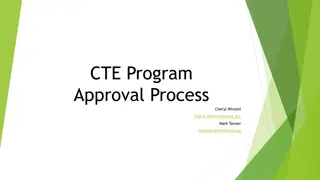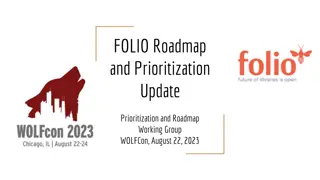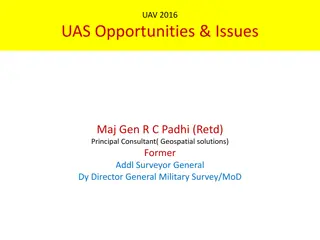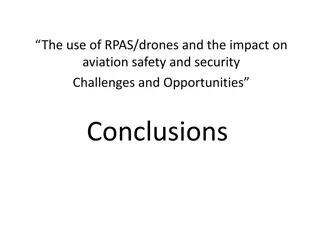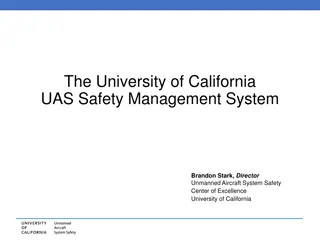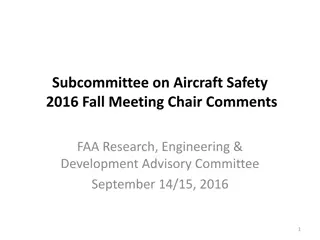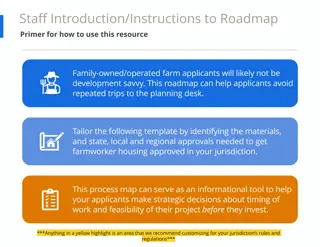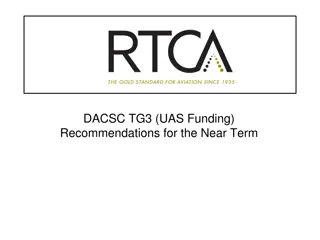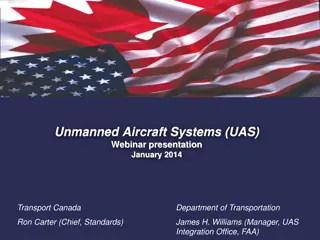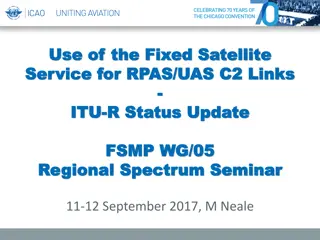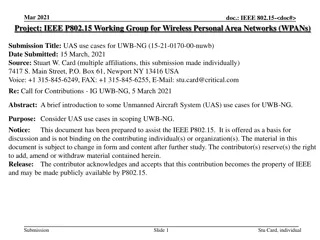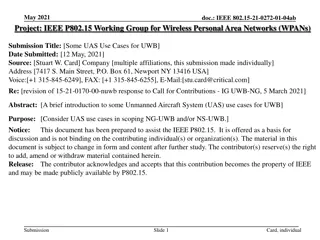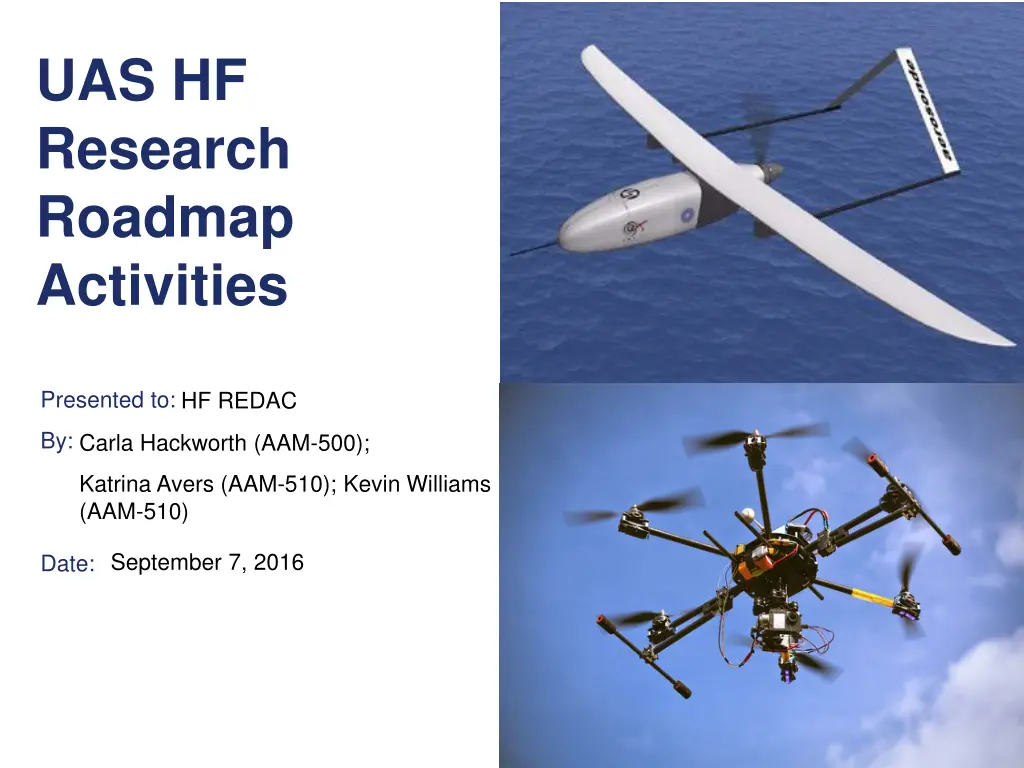
Unveiling UAS Human Factors Research Roadmap Activities
Delve into the UAS Human Factors Summit organized by the Federal Aviation Administration, focusing on stakeholder engagement, research prioritization, and collaborative efforts in addressing critical issues for UAS operations.
Download Presentation

Please find below an Image/Link to download the presentation.
The content on the website is provided AS IS for your information and personal use only. It may not be sold, licensed, or shared on other websites without obtaining consent from the author. If you encounter any issues during the download, it is possible that the publisher has removed the file from their server.
You are allowed to download the files provided on this website for personal or commercial use, subject to the condition that they are used lawfully. All files are the property of their respective owners.
The content on the website is provided AS IS for your information and personal use only. It may not be sold, licensed, or shared on other websites without obtaining consent from the author.
E N D
Presentation Transcript
Federal Aviation Administration UAS HF Research Roadmap Activities Presented to: HF REDAC By: Carla Hackworth (AAM-500); Katrina Avers (AAM-510); Kevin Williams (AAM-510) September 7, 2016 Date:
UAS Human Factors Summit Two-day meeting at MMAC to establish a roadmap for UAS human factors research. The summit was the result of a call to action for collaboration with WJHTC by the MMAC NextGen Integration Committee (ACNIC). Summit attendees included: UAS Integration Office and Other FAA Regulatory Representatives FAA HF R&D (CAMI, WJHTC, ANG-C1) Industry Representatives Academia and Other Scientific Organizations (e.g., ASSURE COE, NASA, MITRE) Federal Aviation Administration 2
UAS Human Factors Summit: Purpose Engage stakeholders from science, industry, and regulatory agency. Review the unique stakeholder issues identified as critical (FAA Reg, FAA HF R&D, Academia/Scientific Orgs, Industry). Develop a roadmap prioritizing research needs pertaining to human factors within UAS operations. Federal Aviation Administration 3
UAS Human Factors Summit: Prep All attendees were asked to submit their Top UAS HF issues prior to attending meeting. The submissions were content analyzed to identify the high-level categories that need to be addressed. The high-level categories were used to determine breakout groups for deep-dive identification and prioritization of issues within each category. Federal Aviation Administration 4
Breakout Groups Categories included: Unique Certification Requirements (including Control of Multiple UAS) Unique Operational Requirements for UAS Missions (such as lost link/off nominal conditions, navigation, and unique visibility requirements) Control Station Design (in terms of DAA displays, limitations of sensory information, automation, etc.) UAS in the NAS (in terms of Crew/NAS interactions, ATC systems and requirements, and latencies) Federal Aviation Administration 5
Post-Summit Assignments Each breakout group briefed their prioritized research issues to the attendees. Research issues were discussed and explained from the different perspectives. Attendees agreed that the work was not over, the issues would be compiled and distributed to the group for final ranking to develop the roadmap. Federal Aviation Administration 6
Survey of Research Issues In February, the complete list of research issues was sent to summit participants. Responders rated each research issue on three factors: Importance, Urgency, and Impact. Importance was rated (High, Medium, Low) in terms of safety and efficiency of UAS operations and the implications for the general public. Urgency was rated (Now, 2-3 Yrs, 4+ Yrs) by indicating when this research needed to begin. The type of impact respondents expected to result from addressing each research issue was identified (FAA Regulations, FAA Policy/Guidelines, Industry Standards, Other, None). Federal Aviation Administration 7
Top Research Issues An overall score was calculated using reported Importance and Urgency. A proceedings report summarizing the findings is under development. A couple of example issues include: Identify requirements for supporting the UAS pilot-in-command during UAS contingency operations including requirements for control station displays, automation, training, and procedural requirements. Identify requirements for supporting the Air Traffic Controllers during UAS contingency operations including requirements for ATC displays, automation, training, and procedural requirements. Federal Aviation Administration 8
Survey of Research Issues These ratings will be used to define the research roadmap by providing a quantitative way to prioritize the research issues to be both informative and actionable. This roadmap will provide the FAA with a foundation for the development of a HF UAS research plan that addresses the identified gaps. Federal Aviation Administration 9

